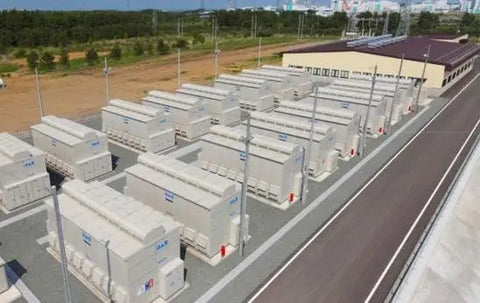What is the difference between a power battery and an energy storage battery?
At present, low-carbon has become the main development direction of the world, and the demand for lithium batteries continues to rise with the support of policies in various countries. With the gradual maturity of lithium battery technology, people mainly divide lithium batteries on the market into two categories: power batteries and energy storage batteries according to the differences in battery application scenarios. So what are power batteries and energy storage batteries? What is the difference between them in the field of application? Read below to find out with the editor!
1. What is a power battery?
Power batteries are mostly used in new energy vehicles, electric trains, light electric vehicles, etc., and are lithium batteries that provide power for these vehicles.

2. What is an energy storage battery?
Energy storage batteries are often used in household energy storage, power stations for solar and wind power generation equipment, portable power supplies, communication base stations, etc., as well as batteries for renewable energy storage energy.

3. The difference between power battery and energy storage battery
1. Performance and Design
The application scenarios of power batteries and energy storage batteries are different, so the performance and design of the two are also different. In order to ensure safety, the power battery as a mobile power supply naturally has high requirements for volume and energy density, and in this way can ensure sufficient and long-lasting battery life, and if electric vehicles want to achieve safe and fast charging, the energy density and power of the power battery Density requirements should also be increased. Furthermore, since the power battery is limited by the size and weight of the vehicle and the acceleration when starting, the power battery has higher performance requirements than the ordinary energy storage battery.
2. Battery management system BMS
BMS (Battery Management System) is an important part of the battery pack. Whether the various functions and components of the battery pack can be coordinated depends on the battery management system BMS, and it can also directly affect the power output of the battery and the safety of the battery pack. The BMS of the battery management system of the power battery and the energy storage battery is different, because the power battery is mostly used in new energy vehicles, and it is often in high-speed motion. The power response speed and power characteristics of the battery, the SOC estimation accuracy, and the number of state parameter calculations are more rigorous. Requirements, and related adjustment functions also need to be realized through BMS.

3. Battery cycle life
Power batteries and energy storage batteries have different service life requirements. Taking electric vehicles as an example, the theoretical life of a ternary lithium iron phosphate battery pack is 1200 times. up to ten years. Compared with power batteries, energy storage batteries are charged and discharged more frequently. Under the premise of the same 10-year service life, they have higher requirements for cycle life. If energy storage power stations and household energy storage are charged and discharged once a day, the energy storage lithium battery The cycle life is required to be greater than 3500 times. If the charging and discharging frequency is increased, the cycle life requirement is usually required to reach more than 5000 times.
4. System structure and cost composition
The power battery PACK is basically composed of the following five systems: battery module, battery management system, thermal management system, electrical system and structural system. The cost of the power battery system is composed of comprehensive costs such as batteries, structural parts, BMS, boxes, auxiliary materials, and manufacturing costs. The battery cells account for about 80% of the cost. ) cost accounts for about 20% of the entire battery pack cost. The energy storage battery system is mainly composed of battery pack, battery management system (BMS), energy management system (EMS), energy storage converter (PCS) and other electrical equipment. In the cost composition of the energy storage system, the battery is the most important part of the energy storage system, accounting for 60% of the cost; followed by the energy storage inverter, accounting for 20%, and the EMS (energy management system) accounting for 10%. BMS (battery management system) costs account for 5%, and others account for 5%.

The above content is the main difference between the two main forces in the battery industry, "power battery and energy storage battery". I hope it can help you.

